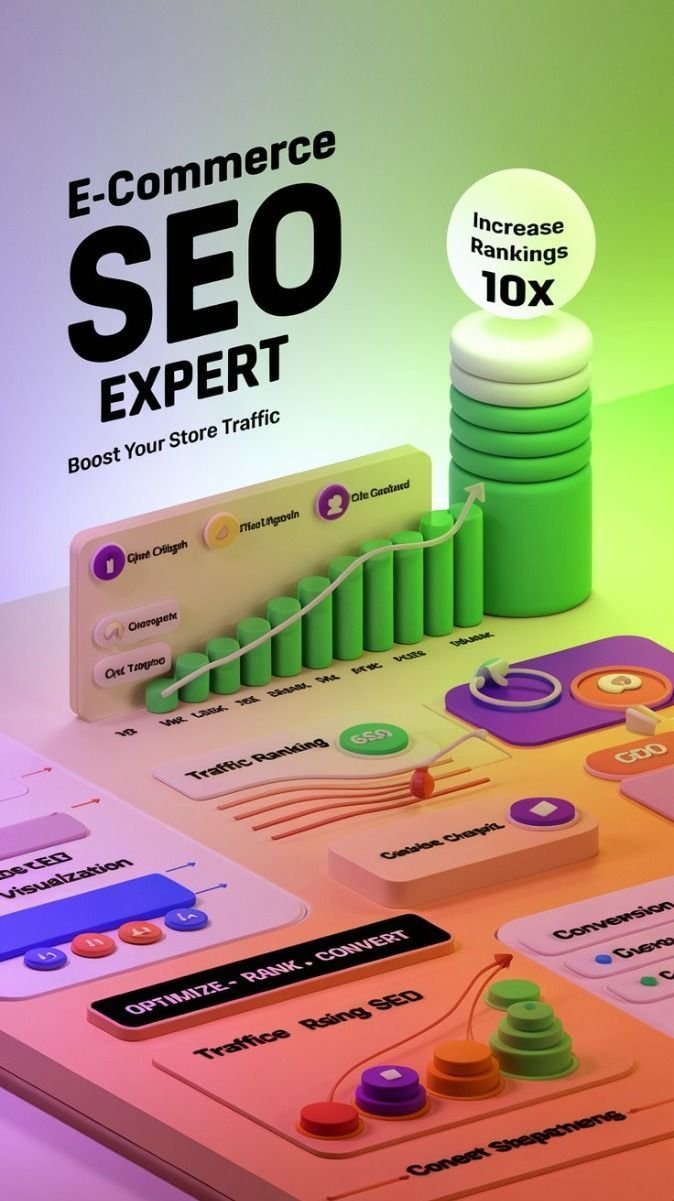The Importance of Dynamic Content in Ecommerce SEO and How to Implement It

The Importance of Dynamic Content in Ecommerce SEO and How to Implement It
In the highly competitive world of ecommerce, businesses need more than just static web pages to attract and retain customers. Dynamic content—which updates based on user behavior, preferences, and real-time data—plays a crucial role in ecommerce SEO services by enhancing user experience, engagement, and search rankings.
With search engines prioritizing relevance, ecommerce SEO strategies that incorporate dynamic content can significantly boost organic traffic and conversion rates. But what exactly is dynamic content, and how can ecommerce businesses implement it effectively? Let’s explore.
What is Dynamic Content?
Dynamic content refers to website elements that change based on various factors, such as:
✅ User location (e.g., displaying region-specific offers)
✅ Browsing history (e.g., personalized product recommendations)
✅ Real-time data (e.g., showing current stock availability)
✅ User engagement (e.g., updating featured products based on popularity)
Unlike static content, which remains the same for every visitor, dynamic content adapts to individual user interactions, making the shopping experience more personalized and engaging.
Why is Dynamic Content Important for Ecommerce SEO?
1. Improves Search Engine Rankings
Search engines like Google prioritize fresh, relevant, and updated content. Websites with dynamic content frequently update their pages with new products, trending items, and user-generated reviews, which helps improve indexing and search rankings.
🔹 Example: An ecommerce website that dynamically updates its homepage with bestselling products will have higher engagement and better SEO performance than a static page.
2. Enhances User Experience and Engagement
Dynamic content creates a personalized shopping experience, leading to higher engagement, lower bounce rates, and increased dwell time—all of which positively impact SEO rankings.
🔹 Example: A fashion ecommerce site can display personalized product recommendations based on a visitor’s previous searches, making the shopping experience more relevant.
3. Boosts Conversion Rates
Personalized and dynamic content helps drive higher conversions by showing users the most relevant offers and products. Ecommerce SEO services often leverage dynamic content to increase click-through rates (CTR) and reduce cart abandonment.
🔹 Example: Showing limited-time offers, stock availability, and real-time customer reviews creates urgency and encourages quick purchasing decisions.
4. Encourages More Backlinks and Social Shares
Fresh, regularly updated content attracts more backlinks from authoritative sites and social media shares, boosting domain authority and organic reach.
🔹 Example: Ecommerce blogs that dynamically update with trending topics, FAQs, and user-generated content naturally attract external links and improve SEO.
How to Implement Dynamic Content in Ecommerce SEO
1. Personalized Product Recommendations
How It Works:
✅ Use AI-powered recommendation engines to display related, trending, and frequently bought together products.
✅ Show personalized recommendations based on user browsing history.
SEO Benefit:
Improves internal linking, reduces bounce rates, and increases conversions.
🔹 Example: Amazon’s “Customers who bought this also bought” section dynamically updates based on user behavior.
2. Dynamic Meta Titles and Descriptions
How It Works:
✅ Use automated meta tags that change based on product names, categories, and user location.
✅ Optimize product pages dynamically with relevant long-tail keywords.
SEO Benefit:
Increases click-through rates (CTR) and ensures better keyword targeting.
🔹 Example: Instead of a static title like “Men’s Shoes,” a dynamic title could be “Best Men’s Running Shoes – Buy Online at 20% Off.”
3. Real-Time Stock Availability and Pricing Updates
How It Works:
✅ Show stock updates dynamically (e.g., “Only 3 left in stock!”).
✅ Update pricing dynamically based on discounts and customer location.
SEO Benefit:
Encourages urgency-based purchases and keeps content fresh and relevant.
🔹 Example: eBay dynamically updates product pages with real-time stock availability and bidding prices.
4. Dynamic Customer Reviews and Ratings
How It Works:
✅ Display new customer reviews dynamically on product pages.
✅ Highlight top-rated and trending products based on customer feedback.
SEO Benefit:
Boosts credibility, user trust, and engagement, leading to higher organic rankings.
🔹 Example: Google favors rich snippets from dynamic customer reviews, increasing product visibility in search results.
5. Geo-Targeted Content
How It Works:
✅ Show location-specific products and offers.
✅ Display currency and language settings based on the visitor’s region.
SEO Benefit:
Enhances local SEO and improves user experience for global customers.
🔹 Example: An ecommerce store can automatically show country-specific pricing and promotions based on the visitor’s IP address.
6. Automated Blog Content and FAQs
How It Works:
✅ Update blog sections dynamically with trending topics and user questions.
✅ Implement dynamic FAQs that change based on search trends and customer inquiries.
SEO Benefit:
Keeps the website active and regularly indexed, improving organic traffic.
🔹 Example: A beauty ecommerce site can dynamically update its blog with seasonal skincare tips and trending beauty products.
7. Live Chat and Chatbot Assistance
How It Works:
✅ Use AI-powered chatbots to assist users dynamically based on their queries.
✅ Integrate real-time support with personalized product suggestions.
SEO Benefit:
Improves user experience, dwell time, and engagement, all of which enhance search rankings.
🔹 Example: Chatbots like Shopify’s Kit can recommend products based on real-time user interactions.
Conclusion
Dynamic content is a game-changer for ecommerce SEO services, enhancing user engagement, boosting conversions, and improving search engine rankings. By leveraging personalized product recommendations, dynamic meta tags, real-time stock updates, and geo-targeted content, ecommerce brands can create more relevant and optimized shopping experiences.
For businesses looking to stay ahead, implementing dynamic content strategies is not just an option—it’s a necessity for success in today’s competitive ecommerce landscape.